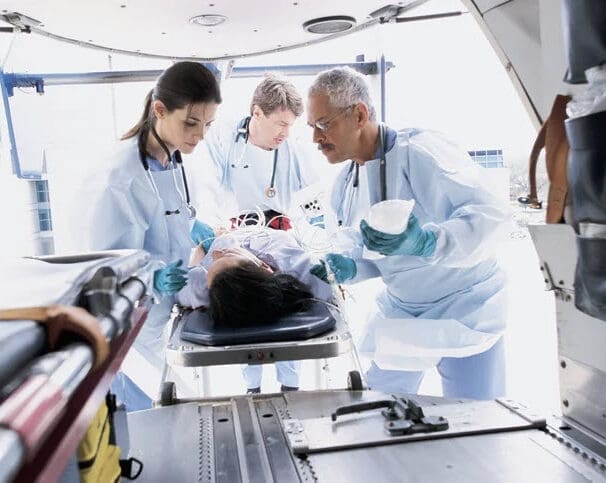HealthProviders DB is a comprehensive database of healthcare providers, including a complete directory of all Patient Transport Certified Respiratory Therapists.
Certified Respiratory Therapist Healthcare Taxonomy Code 2278P4000X
As of today, the following are the total number of Patient Transport Certified Respiratory Therapists nationally, in your State, and near your location.
Select a State below to view the list by State. Additionally, you can narrow the list by city, among other options, from the Filter Panel, which you can open by clicking the vertical ellipses ⋮ in the upper right corner of the app.
Alaska – Alabama – Armed Forces Pacific – Arkansas – American Samoa – Arizona – California – Colorado – Connecticut – District of Columbia – Delaware – Florida – Federated States of Micronesia – Georgia – Guam – Hawaii – Iowa – Idaho – Illinois – Indiana – Kansas – Kentucky – Louisiana – Massachusetts – Maryland – Maine – Marshall Islands – Michigan – Minnesota – Missouri – Northern Mariana Islands – Mississippi – Montana – North Carolina – North Dakota – Nebraska – New Hampshire – New Jersey – New Mexico – Nevada – New York – Ohio – Oklahoma – Oregon – Pennsylvania – Puerto Rico – Palau – Rhode Island – South Carolina – South Dakota – Tennessee – Texas – Utah – Virginia – Virgin Islands – Vermont – Washington – Wisconsin – West Virginia – Wyoming
Medicare
The following are the total number of Patient Transport Certified Respiratory Therapists who accept Medicare in your State, the number who have opted out of Medicare, and the total number excluded from participation in Medicare nationwide.
The diagram below shows all the Patient Transport Certified Respiratory Therapists across the country, represented by blue bubbles. The larger the bubble, the greater the concentration of providers in that area. Red bubbles represent Medicare-excluded providers, with the larger bubbles indicating a higher percentage of excluded providers in that region. You can change the bubble size to be based on exclusions from the Size menu.
What do Patient Transport Certified Respiratory Therapists do?
Patient transport respiratory therapists provide specialized respiratory care to critically ill or injured patients during medical transport, ensuring they receive proper ventilation and oxygenation.
They work with teams in ambulances or helicopters to manage ventilators, perform airway management, administer oxygen therapy, and monitor vital signs to keep patients stable until they reach a hospital.
What they do
Patient assessment: Continuously assess the patient’s respiratory status and overall cardiopulmonary health during transport.
Ventilator management: Operate and manage transport ventilators, which can be challenging in a moving vehicle or aircraft.
Airway management: Handle all aspects of airway management, including clearing established airways, performing tracheostomy care, and assisting with intubations or extubations.
Oxygen and medication delivery: Administer oxygen therapy and other prescribed treatments, such as aerosolized medications.
Team collaboration: Work closely with nurses, paramedics, and physicians to ensure the patient’s stability and to communicate with the receiving facility.
Monitoring and documentation: Monitor vital signs and record patient progress throughout the transport.
The transport environment
Critical care: Focus on patients with complex pulmonary conditions who are often critically ill.
Independent work: Often requires working independently and making quick, critical decisions in a fast-paced, unpredictable environment.
Specialized transport: Can be part of surface (ambulance) or air (helicopter, air ambulance) transport teams.

